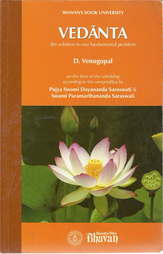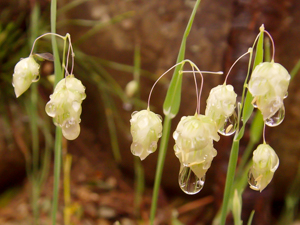Mantra 2
*** Read Part 2 ***
सर्वं ह्येतद् ब्रह्मायमात्मा ब्रह्म सोऽयमात्मा चतुष्पात् || 2 ||
sarvaM hyetad brahmAyamAtmA brahma so.ayamAtmA chatuShpAt
sarvaM etad – Everything here
hi – (is)certainly
brahma – brahman.
ayam AtmA – This Atman
brahma – (is) brahman.
saH ayam AtmA – This very Atman
chatuShpad (= chatur + pAda) – (has) four aspects.
Absolutely everything is brahman. This Atman is brahman and has four aspects.
In the first mantra, OM was said to be everything. (How this is so will be analyzed in mantras 8 – 12.) The Upanishad now asks what is the nature of this Self, Atman; mantras 2 – 7 make this enquiry.
Continue reading
 Narada climbs up the staircase from Name up to Spirit almost hopping and jumping spurred by his own enthusiasm and curiosity. He asks his venerable teacher at each step after meditating, “What’s next?” He, however, falls absolutely silent after meditation at the level of Spirit, the 15th itself. He has another flight of steps to take to reach the Ultimate, the Absolute!
Narada climbs up the staircase from Name up to Spirit almost hopping and jumping spurred by his own enthusiasm and curiosity. He asks his venerable teacher at each step after meditating, “What’s next?” He, however, falls absolutely silent after meditation at the level of Spirit, the 15th itself. He has another flight of steps to take to reach the Ultimate, the Absolute! Shankara opens his commentary on the 6th chapter of chAndogya with a very brief intro. bringing out the context of Svetaketu’s story and its relationship (sambandha) to the rest of the Upanishad. He says that the 6th chapter explains two important points, which are:
Shankara opens his commentary on the 6th chapter of chAndogya with a very brief intro. bringing out the context of Svetaketu’s story and its relationship (sambandha) to the rest of the Upanishad. He says that the 6th chapter explains two important points, which are:

